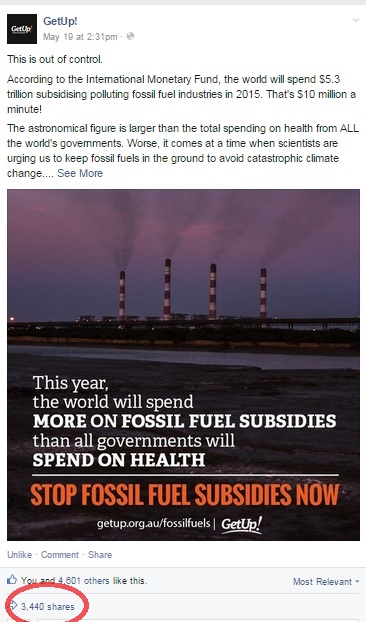Having a social media post ‘go viral’ (be shared so widely on the internet that it spreads like a contagious disease) is often considered the ‘holy grail’ of digital marketing.

(Not that Holy Grail… I just couldn’t resist a bit of Monty Python.) Anyway… Kaplan and Haenlein identified three conditions required for a viral marketing epidemic: giving
- the right message (memorable and interesting) to
- the right messengers (market mavens, social hubs and salespeople) in
- the right environment (communicate to many disconnected subcultures – but a fair bit of luck is involved here!).
They also identified four types of viral marketing campaigns.
- Nightmares – such as JetBlue’s 2007 crisis, which left passengers stranded and created a firestorm of negative publicity on social media (although it’s also a good example of how to handle a crisis!)
- Strokes of luck – for example the Mentos and Diet Coke experiment (YouTube returns about 281,000 results for this search, and there’s even a Wikipedia entry!)
- Homemade issues such as dishonesty – like this example of a fake blog that landed Sony in hot water with its target market; and
- Triumphs – like Old Spice’s incredibly successful ‘The man your man could smell like’ campaign, which was viewed 23 million times in 36 hours.
Source: Old Spice
So why do people share content? The following infographic may provide some answers:

So there you go… 84% share to support issues or causes they care about (so it’s not just all about cat memes!). But what does this mean for digital marketers? Well, if you’re a not-for-profit (NFP) or charity, this is obviously great news. Just make sure you emphasise your cause or issue, and remember to include a call to action by asking your followers to share your post. There are a LOT of causes that do a great job on social media – check out these Facebook pages: GetUp (whose posts often have shares in the thousands), Lean In, and Environment Victoria.

So how can other – for profit – companies leverage people’s desire to share what is important to them? Well, bigger companies can create partnerships with charities or NFPs, like global professional services firm EY has done with various charities, and then leverage this (and create exposure for their chosen charity) through posting about the partnership on social media. Even small to medium businesses can potentially offer value to smaller charities, maybe through staff volunteering. These kinds of partnerships have the potential to be win-win, with the charity gaining assistance and exposure, and the business enjoying an improved image. Of course, funny cat memes can work well too!


However… while a funny meme or picture has the potential to go viral, it’s important to consider what you are trying to achieve. I don’t know who created the above memes, or for what purpose, and I’m guessing you don’t either. So it’s not always enough to post content that goes viral, it has to mean something to the target audience, and to influence them in some way, if it is to achieve your objectives. Do you want to create awareness of a brand? Maybe it will be enough to include the brand name. Do you want to create preference? Well, then you’re going to have to provide a reason for people to prefer your brand – which is probably going to mean including some information. If it’s action you’re wanting to encourage, then there will need to be a call to action. In summary: It’s probably not that difficult to create content that goes viral… but if you want to achieve some objective, well… that’s going to be a bit more difficult! Over to you: what do you think marketers need to do to have content go viral? And if you’ve seen any memorable examples recently, please share in the comments!

Another way that content can go viral is by celebrities endorsement or a public figure who is admired by so many people have a say in the content. This is mainly driven by the love and respect for those famous individuals. Hence, marketers can exploit this to their advantage. For instance, in promotion campaigns or in new product launches.
LikeLiked by 1 person
Absolutely, especially when the endorser has a substantial public following that they alert to it!
LikeLiked by 1 person
A really successful viral campaign was the ‘Ice Bucket’ challenge raising money for MND. It came out today that they raised over $1 million which is incredible, purely as a result of the message going viral on social media.
LikeLiked by 1 person
Wow, I didn’t know that! Yes that was a successful campaign in terms of going viral, it was all over my newsfeed (and everyone else’s I’m sure) but I did wonder if it had actually made much difference in terms of awareness and/or funds. Good to know that it did!
LikeLike
I agree with you in the way that all viral content might not actually be useful within the context of digital marketing. The real challenge is harnessing the unpredictable nature of viral content and as you said using it to achieve an objective, and that may not apply in many cases.
LikeLike
Yes, that’s what I started thinking about when I was researching this post – as hard as it might be to get content to go viral, it’s not really a useful goal unless you can harness that reach in some way.
LikeLike
I think it’s hard for digital marketers to plan for something to go viral. Sometimes going viral can be pure luck. It could have been posted at the right time and place and found by the right people who promote it. And as quickly as the exposure goes, it can also quickly leave. So when or if something goes viral, I think itll be more important to have a plan of how they will utilise it for their marketing objectives.
LikeLike